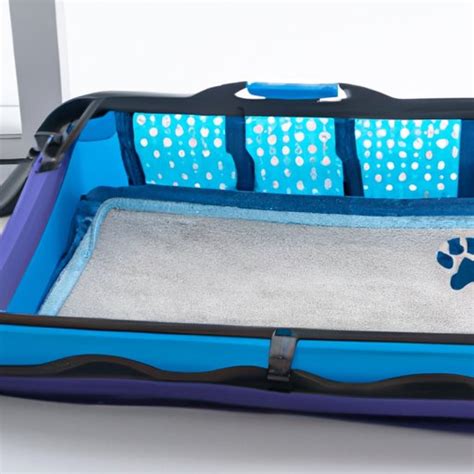Introduction
For dog owners, keeping their furry friends healthy and comfortable is of utmost importance. This includes not only providing them with proper nutrition and exercise but also ensuring their living environment is clean and free from harmful bacteria. A dog bed, being a haven for your canine companion, can quickly become a breeding ground for microorganisms. To maintain a hygienic and healthy space for your dog, regular sanitizing and disinfecting is crucial.

Why Sanitize and Disinfect Your Dog’s Bed?
A dirty dog bed can harbor a plethora of bacteria, viruses, and allergens, posing health risks to your dog and your family.
- Bacteria: Studies by the American Kennel Club (AKC) have shown that dog beds can contain up to 200,000 bacteria per square inch, including harmful strains like Salmonella, E. coli, and Staphylococcus aureus. These bacteria can cause infections, skin irritations, and respiratory problems.
- Viruses: Dog beds can also serve as reservoirs for viruses like canine distemper, parvovirus, and coronavirus. These viruses are highly contagious and can lead to serious illness or even death in dogs.
- Allergens: Dust, pollen, and pet dander accumulate in dog beds, triggering allergic reactions in humans and dogs alike. Regular sanitizing and disinfecting removes these allergens, reducing discomfort and promoting a healthier environment.
Choosing the Right Sanitizing and Disinfecting Methods
Various methods are available for sanitizing and disinfecting dog beds. The choice of method depends on the type of bed and the level of contamination.
Sanitizing Methods
- Vacuuming: Regularly vacuuming your dog’s bed removes loose hair, dirt, and debris. Use a vacuum cleaner with a HEPA filter to capture allergens and bacteria.
- Washing: Most dog beds can be machine-washed on a warm or hot cycle with a mild detergent. Add a pet-safe disinfectant to the wash cycle for enhanced sanitizing.
- Steam cleaning: Steam cleaning uses high-temperature steam to kill bacteria and remove stains. It is a deep cleaning method suitable for mattresses and thick dog beds.
Disinfecting Methods
- Bleach solution: A solution of 1 part bleach to 10 parts water is an effective disinfectant against most bacteria and viruses. However, avoid using bleach on fabrics that are delicate or prone to fading.
- Lysol spray: Lysol spray contains a disinfectant that kills 99.9% of germs. It is convenient for quick sanitizing, but make sure to follow the directions for use carefully.
- Veterinary-grade disinfectants: Professional disinfectants designed specifically for veterinary use are highly effective against bacteria, viruses, and fungi. Consult your veterinarian for recommendations.
Common Mistakes to Avoid
When sanitizing and disinfecting your dog’s bed, it is essential to avoid certain common pitfalls:
- Overusing bleach: While bleach is a potent disinfectant, excessive use can damage fabrics and even irritate your dog’s skin.
- Ignoring corners and crevices: Dirt and bacteria tend to accumulate in the corners and crevices of the dog bed. Pay extra attention to cleaning these areas.
- Neglecting drying: After sanitizing or disinfecting the dog bed, allow it to dry completely before letting your dog use it again. Moisture can promote mold and mildew growth.
FAQs
- How often should I sanitize and disinfect my dog’s bed?
The frequency depends on how often your dog uses the bed and the level of dirt and debris. Aim to sanitize once or twice a week and disinfect monthly or as needed.
- Can I use human disinfectants on my dog’s bed?
No, human disinfectants can contain ingredients that are harmful to dogs. Use pet-safe disinfectants specifically designed for veterinary use.
- How can I prevent bacteria from building up on my dog’s bed?
Regularly vacuum and brush your dog, especially after playtime or during shedding seasons. Keep the bed in a well-ventilated area and consider using a hypoallergenic dog bed cover.
Future Trends and Innovations
As technology advances, innovative methods for dog bed sanitizing and disinfecting are emerging:
- Automated sanitizing systems: Self-sanitizing beds use built-in UV lights or ionization technology to kill bacteria and viruses continuously.
- Antimicrobial fabrics: Advances in fabric technology have led to the development of fabrics that resist bacterial and fungal growth.
- Biodegradable sanitizers: Eco-friendly sanitizers made from plant-based or biodegradable materials are becoming more prevalent.
Conclusion
Maintaining a clean and sanitized dog bed is essential for the health and well-being of your beloved companion. By following the tips and methods outlined in this guide, you can create a hygienic and comfortable environment for your dog. Remember to consult your veterinarian for personalized advice and recommendations tailored to your pet’s individual needs.





















